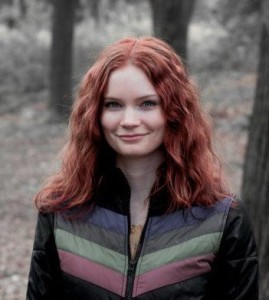Red Crosses, by Sasha Filipenko: This is brief, rich, and bracing. In every way but one it does not remind me of Philip Roth, but the framing device is the exception – a first-person narrator is not the main focus of the novel (though this one has a much more devastating backstory than Zuckerman is typically given); rather, he functions as a set of ears – stand-in for the reader – for the story of another character. While I thought that the framing device functioned beautifully overall, I wanted more of a conclusion to the narrator’s own story. The motifs of crosses and bridges are compelling and the ending is a hard slap of cold water – I would call the novel delightful, and I suppose I am calling it delightful, though it feels slightly wrong given that much of the narrative centers on Stalin and the terrible lack of choices citizens of the USSR faced during his reign.
The Lamplighters, by Emma Stonex: I think that whenever I read a book that takes place on a tiny rocky island – or in this case, simply in the middle of the sea on a lighthouse moored to nothing – I return to the same mental image, as if I’m visiting one place from dream to dream. It helps that every book seems to draw from the same color palate – slate, pewter, all of the lesser stones – and emotional range (which is not a knock against them). This novel is a variation on the closed-room mystery, except that this room is a hundred foot tall tower whose sides can only be breached by the worst of storms. All three of the lighthouse keepers go missing at once, the iron door locked from the inside. In the first 50 pages the author (by way of a character’s internal monologue) lists all of the speculated theories about the disappearance, so I was very curious to see how she came up with something unexpected. It’s hard to say without spoilers whether she did so or not, but I think it worked in the end!
The Turnout, by Megan Abbott: Abbott’s novels always provoke an extreme response in me – frequently it’s admiration and intense interest, as with The Fever and The End of Everything; sometimes it’s disappointment because the settings and characters cater to pet interests, like gymnastics, but the characters’ actions are so difficult to believe; once it was an exaggerated eyeroll (Give Me Your Hand). Ballet, the focus of The Turnout (unsurprisingly), ranks up there with gymnastics for me, so I was cautiously hopeful…atmospherically, this felt more like a Shirley Jackson novel (not a bad thing in itself, but it clashed with the modern yuppie ballet moms and their over-scheduled, 2010s-popular-named offspring) – the siblings in a crumbling old house, the dead parents, the odd familial and romantic relationships. I was slightly aggravated the entire time that although we learn that the main characters, sisters, are one year apart, we never find out which is the elder. The one I determined to be the older sister, possibly just by virtue of the narration being in her perspective, seemed overly invested in her sister’s sex life to the point where I wanted to shake out the book and say get a grip, lady. I grew more invested as the story continued, although I could see what was coming a mile away, and ultimately appreciated the overlay of very modern concerns – architectural contractors! yuppie parents! – with the gothic setting worked more effectively than I had expected. I still prefer her earlier novels.
100 Years of Solitude, by Gabriel Garcia Marquez: I first read part of this some years ago – probably after reading a list of “30 Books to Read Before Turning 30.” I didn’t finish because I was having such a hard time keeping track – of time, of events, and mostly of names. When I interacted with the book again, it was because one of my students was writing an essay about it, and the pieces that I read convinced me to try again. Now I’m reading it alongside a (different) student, one chapter a week, paying closer attention and referring back to the family tree the precedes the book as often as it takes.
Infinite Powers, by Steven Strogatz: I love Steven Strogatz. Every time I’ve heard him on a podcast or seen a YouTube video featuring him, he’s seemed so kind and so truly in love with mathematics. I’m reading this book – a history and explanation of calculus for the layperson – with a student (who is not taking calculus yet, and there’s definitely an argument that we should have started with Strogatz’s The Joy of X, but I felt the pun of Infinite Powers would be more appropriate, and I wanted to demystify calculus since my student will likely take it next year). Strogatz also has a named math/communications competition for high schoolers in association with New York’s MOMATH museum, which is fitting since part of his life’s work has been to expose more of the post-secondary world to higher math.



